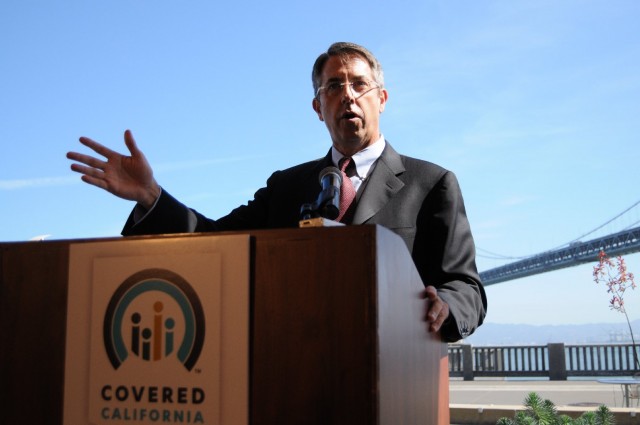Covered California exceeded projected sign ups "in every ethnic group, in every demographic category, in every region of the state," Lee said. Asians signed up in significantly higher numbers than expected.
"This matches the momentum we saw in March which is the people enrolling continue to get younger, continue to get more diverse and reflect the state of California," Lee added.
Anthony Wright, executive director of Health Access, a statewide advocacy group, said it was to be expected that the enrollment became more diverse as time went on. "It's not a surprise that those who came in during February and March, just before the deadline, were folks previously uninsured and learning about new options, people who by definition were younger and more predominantly people of color or lower income."
What is not known -- and won't be for some time -- is how many of those 3.3 million Californians were previously uninsured. The annual California Health Insurance Survey later this year may help shed some light on that question.
In addition, some of those who signed up may end up not needing the insurance after all. They might have gotten a job with employer-based insurance since they enrolled, for example. Or their income may have declined and they are now eligible for Medi-Cal. Still others may decide they cannot afford insurance. To insurers, this is known as "churn." Covered California expects 85 percent of those who signed up to pay their premium.
Reviewing the Projections
Covered California's projected sign ups were an extrapolation from modeling done by researchers at UCLA and UC Berkeley in early 2013.
Under the California Simulation of Insurance Model, CalSIM, researchers projected a "base" scenario and an "enhanced" scenario. Under the latter projection, 1.2 million Californians were expected to enroll in subsidized insurance. With the numbers announced Thursday, Covered California said 88 percent of enrollees are subsidy-eligible. That's 1.22 million people, nearly right on the nose of the 1.2 million projection.
"I might go to Vegas now," quipped UCLA's Dylan Roby, a CalSIM lead researcher. "We did this quite awhile ago now and tried to estimate the best we could based on economic evidence. We're happy we came that close to the final enrollment number."
Enrollment by Channel
Covered California also looked at how people signed up. While many people successfully enrolled online, others needed in-person assistance. Here's the breakdown:
- 41 percent of enrollees signed up on the Covered California website
- 39 percent enrolled through a certified insurance agent
- 9 percent enrolled with a certified enrollment counselor
- 9 percent call center representatives
No data was available for enrollees through county workers.
Both Roby and Health Access' Wright pointed out that the enrollment counselor model is new and slower to gain traction. This might have accounted for some of the challenges in enrolling Latinos, who are believed to prefer enrolling in person. "How many more people could we have enrolled if we had more enrollment counselors on the ground," Wright said. He also pointed out the detriment of long call center hold times. "Those are issues of scale that we need to be ready for, for the next round."
National Numbers Released
President Obama also announced Thursday that national enrollment on both the federal and state exchanges had reached 8 million people. California has 12 percent of the nation's population, but has 17.5 percent of all sign ups.
Meanwhile, Medi-Cal enrollment is ongoing. People can sign up anytime.
While the first open enrollment period is over, anyone who has what insurers call a "qualifying life event" -- they get married or divorced, have a baby, lose a job -- enters a special enrollment period. They have 60 days to sign up for insurance on Covered California.
Update: This post has been updated to clarify the CalSIM projection model.
[contextly_auto_sidebar id="gnZmhFUyMKJt3CfZPsdYdUn57xGY1Toy"]
